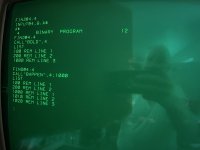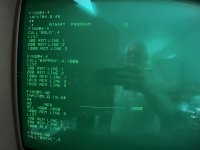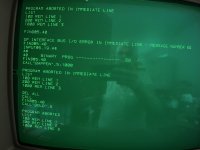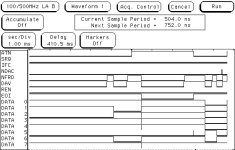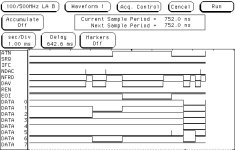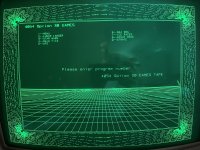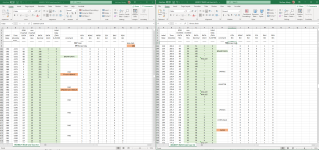nikola-wan
Veteran Member
Excellent work! I agree that secondary address 17 supports CALL "BOLD" and "BSAVE" on the 4924 - because I just got it to work on my 4924.
Note the three line program loaded by CALL "BOLD",4 - terminated without BREAK and the three lines I saved are in the file.
The CALL "BAPPEN",4,17;1000 should append those three lines at line 1000 and renumber the lines - which is what happened - hooray!
First photo below shows 4924 successful commands, including BAPPEN properly appending the file to the program in memory
Second photo on 4054A with flash drive photo showing these commands using the Flash Drive and a NEW file 40 in ROOT.
CALL "BSAVE",4 hung - I pressed BREAK twice. Then I examined the header on file 40 and it showed a binary program.
CALL "BOLD",4 hung, but after double BREAK the 3 line program was in memory.
CALL "BAPPEN",4 on that same file hung, but after double break only the 3-line program was in memory
See 4054A photo 2 and 3 shows what happened trying those commands on the Flash Drive.
This is with your last Flash Drive code drop in early May. I tried patching those two lines of code - no difference in the result on the 4054A.
I did a logic analyzer capture of 4924 BOLD and BAPPEN - although the file number was 3 for that capture.
When I went back to take photos - file 3 was not working, so I remarked and used file 4 for the photos.
Last two pictures are the end of the 4924 BOLD and BAPPEN traces. I think what happens here is the key.
In both cases the data had been transferred and there was about 20msec of dead time.
I'm working to get the trace files into excel spreadsheets.
Note the three line program loaded by CALL "BOLD",4 - terminated without BREAK and the three lines I saved are in the file.
The CALL "BAPPEN",4,17;1000 should append those three lines at line 1000 and renumber the lines - which is what happened - hooray!
First photo below shows 4924 successful commands, including BAPPEN properly appending the file to the program in memory
Second photo on 4054A with flash drive photo showing these commands using the Flash Drive and a NEW file 40 in ROOT.
CALL "BSAVE",4 hung - I pressed BREAK twice. Then I examined the header on file 40 and it showed a binary program.
CALL "BOLD",4 hung, but after double BREAK the 3 line program was in memory.
CALL "BAPPEN",4 on that same file hung, but after double break only the 3-line program was in memory
See 4054A photo 2 and 3 shows what happened trying those commands on the Flash Drive.
This is with your last Flash Drive code drop in early May. I tried patching those two lines of code - no difference in the result on the 4054A.
I did a logic analyzer capture of 4924 BOLD and BAPPEN - although the file number was 3 for that capture.
When I went back to take photos - file 3 was not working, so I remarked and used file 4 for the photos.
Last two pictures are the end of the 4924 BOLD and BAPPEN traces. I think what happens here is the key.
In both cases the data had been transferred and there was about 20msec of dead time.
I'm working to get the trace files into excel spreadsheets.

